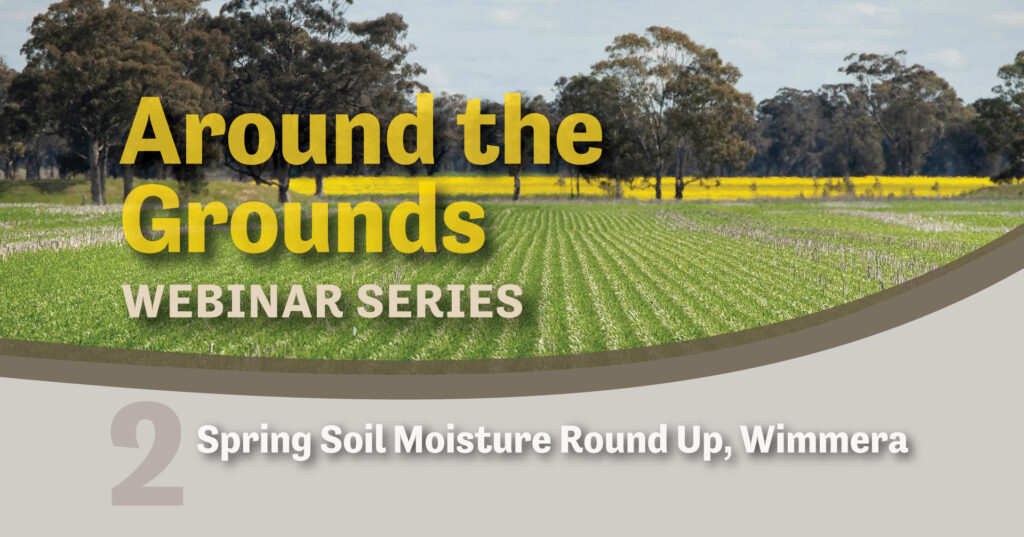Wimmera spring soil moisture webinars for farm planning
A Wimmera ‘Around the Grounds’ spring webinar series is helping guide farmers through the remainder of the cropping season using data from more than 70 soil moisture probes and weather stations.
The two webinars with agri-strategist Dr Kate Burke and Agriculture Victorian seasonal risk agronomist Dale Boyd go through how to use the portal and utilise the data it provides.
Watch on Wimmera CMA’s YouTube account.
- Watch Around the Grounds Spring 2023 Session 1
- Watch Around the Grounds Spring 2023 Session 2
- Join the portal

The portal is delivered by Wimmera CMA and participating farmers with funding from the Australian Government’s Future Drought Fund. It provides data such as soil moisture levels, temperature, wind speed and direction and rainfall to inform agronomic and risk decision-making to bolster farm business resilience.
The first webinar (September 2023) analyses the latest data which indicates that while soil moisture is being used by crops, most soil profiles across the Wimmera are still around 75% full with decent soil moisture at depth. These findings area consistent with Agriculture Victoria’s statewide soil moisture probe sites.
“While we are starting to see crops draw down on moisture reserves, it’s important to note that this is expected and naturally occurring, typical with current crop growth stages,” Mr Boyd said.
The second webinar (October 2023) looks at soil moisture profiles across the Wimmera which are still indicating healthy reserves of plant-available water. Sites with the fullest soil moisture profiles are fallow or brown manure crops.
Also:
- Soil moisture within the top 30-70cm is now being drawn down by crops. This is a good thing! Crops are accessing this soil moisture to fill grain. It’s a natural response at this time of year for crops to draw dawn on soil moisture reserves.
- Soil moisture data is complimented by a suite of weather station information which is also housed in the data portal. Temperature graphs can be used to track how long crops were exposed to temperatures at or below zero.
- The portal is showing that good reserves of soil moisture are assisting in plant recovery from frosts.
Mr Boyd encouraged Wimmera farmers and agronomists to access the free portal.
“Now is the perfect time for farmers to visit the portal and familiarise themselves with the data that’s available to gain a broader understanding of how soil moisture and other weather patterns will influence the rest of the growing season.”
Mr Boyd suggested a desktop computer or laptop was the best way to view the portal, rather than via a mobile phone, to be able to properly analyse the data.
Dr Burke said with the Bureau of Meteorology declaring an El Nina, Wimmera farmers are facing above average temperatures and late season frosts, with below average rainfall likely.
“However, crops can fill without spring rain and the grain and hay price outlooks are promising,” she said.
Dr Burke recommends farmers complete price by yield calculations before making too many decisions and considering yield and income scenarios using data from the portal.
“Research tell us if we’re using data we are more likely to engage the logical part of our brain rather than emotional part of the brain,” she said.
Dr Burke said the purpose of creating all this data from across the catchment and putting it all together in the portal was to help farmers make better decisions based on concrete data which can back up their gut feel on what’s happening in our paddocks.
“The intention of the portal is to help farmers make more informed decisions on harvest logisitcs, grain selling, and those that may have copped some frost damage can look at salvage options and impact on grain quality.
“Along with regular crop inspections, this will help you head into harvest with no surprises.”




